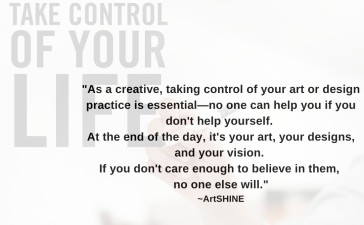Featuring ArtSHINE Licensing artist
Surface design is an intricate and versatile field that holds the power to transform ordinary materials into extraordinary works of art. This comprehensive beginner’s guide unravels the fascinating realm of surface design, shedding light on its definition, applications, and the myriad possibilities it offers to creative minds.
What is Surface Design?
At its core, surface design involves the embellishment of surfaces through various artistic techniques. It goes beyond conventional art forms, extending its reach to textiles, ceramics, paper, and more. Surface designers infuse life into everyday objects, turning them into captivating pieces through the skilful application of colour, pattern, and texture.
Applications of Surface Design
1. Textiles:
One of the most prominent applications of surface design is in the realm of textiles. From vibrant clothing patterns to intricate upholstery, surface designers play a pivotal role in shaping the aesthetic appeal of fabrics. Techniques like screen printing, dyeing, and embroidery breathe life into plain fabrics, creating visually stunning and textured masterpieces.
2. Home Decor:
Surface design extends its influence to home decor items such as wallpaper, curtains, and linens. Designers elevate the ambiance of living spaces by incorporating unique patterns and textures, transforming houses into personalized havens.
3. Ceramics and Pottery:
The world of ceramics and pottery undergoes a vibrant makeover through surface design. Artists employ techniques like glazing, sgraffito, and decoupage to add intricate details and visual interest to their creations, turning functional items into pieces of art.
4. Paper and Stationery:
From greeting cards to stationery, surface design graces the paper with creative expressions. Printmaking, hand-painting, and digital design techniques converge to produce visually appealing paper products that stand out in a sea of mass-produced items.
5. Packaging Design:
Surface design plays a crucial role in packaging, catching the consumer’s eye and conveying the essence of a product. Engaging patterns, color schemes, and textures enhance the visual appeal, contributing to a brand’s identity.
Getting Started in Surface Design
1. Explore Techniques:
As a beginner, familiarize yourself with various surface design techniques such as block printing, screen printing, and digital design. Experimenting with these methods will help you discover your preferred style.
2. Understand Materials:
Different materials require different approaches. Whether working with fabric, paper, or ceramics, understanding the properties of your chosen medium is essential for successful surface design.
3. Embrace Digital Tools:
In the digital age, surface designers often incorporate technology into their craft. Learning software like Adobe Creative Suite can open up new avenues for creativity and expression.
4. Attend Workshops and Courses:
Consider attending workshops or enrolling in courses to hone your skills. Learning from experienced surface designers provides valuable insights and guidance.
Conclusion
Surface design is a dynamic and expressive field that invites individuals to embark on a journey of creativity and innovation. From textile art to home decor, its applications are vast and varied, offering endless opportunities for artistic exploration. Whether you’re a seasoned artist or a newcomer to the world of design, surface design beckons with a canvas ready to be transformed into a masterpiece of your own creation.
Want to learn more?
- Find out more
- Launch Pad + Accelerator Expressions of Interest
- Selling and Licensing Your Art & Designs Around the World with ArtSHINE.
We’re here to help you to take action, just like we’ve helped thousands of other entrepreneurs, business owners, and creative professionals all around the globe.
Now is the time to let your passion SHINE.
Now is the time to Make Tomorrow Today!
To your success, Vinh Van Lam and Stuart Horrex Cofounders
ArtSHINE.com





